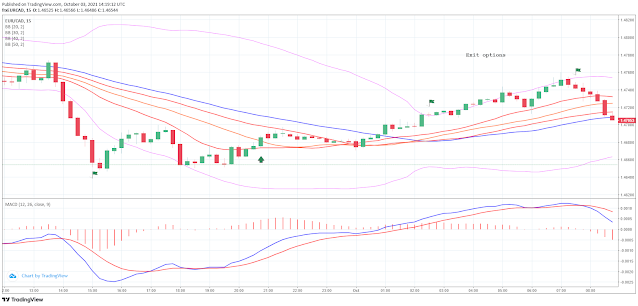The "Four Bollinger Bands Reversal" strategy, incorporating both classic and quantum approaches, is designed to identify market reversals using multiple Bollinger Bands. This strategy is favored for its simplicity and potential profitability, particularly when applied to synthetic currency pairs.
Setup Strategy:
Time Frame: 15 minutes or higher.
Currency pairs: All, with synthetic pairs preferred, especially for the quantum approach.
Indicators:
Bollinger Bands (20, 2)
Bollinger Bands (30, 2)
Bollinger Bands (40, 2)
Bollinger Bands (50, 2)
MACD (12, 26, 9)
Trading Rules
Buy Signal
Price touches or breaks the last lower band.
Price closes above the second middle band.
MACD crosses upward.
Buy at the close of the current candle or at the opening of the next candle.
Sell Signal
Price touches or breaks the last upper band.
Price closes below the second middle band.
MACD crosses downward.
Sell at the close of the current candle or at the opening of the next candle.
Exit Strategy
Place initial stop loss at the previous swing high for long positions or swing low for short positions.
Take profit when MACD changes direction or when the price first touches the opposite band.
Examples of Trading:
Buy Example:
The price of the currency pair touches or breaks the lower band of the Bollinger Bands.
The price then closes above the second middle band.
Simultaneously, the MACD crosses upward.
A buy position is initiated either at the close of the current candle or the opening of the next candle.
Sell Example
The price touches or breaks the upper band of the Bollinger Bands.
Subsequently, the price closes below the second middle band.
Meanwhile, the MACD crosses downward.
A sell position is established either at the close of the current candle or the opening of the next candle.
Exit Strategy
To manage risk, set an initial stop loss at the previous swing high for long positions or swing low for short positions.
Take profit when the MACD indicator changes direction or when the price first touches the opposite band.
This strategy combines the versatility of Bollinger Bands with the momentum insights of MACD, providing clear entry and exit signals for traders seeking to capitalize on market reversals.










Post a Comment